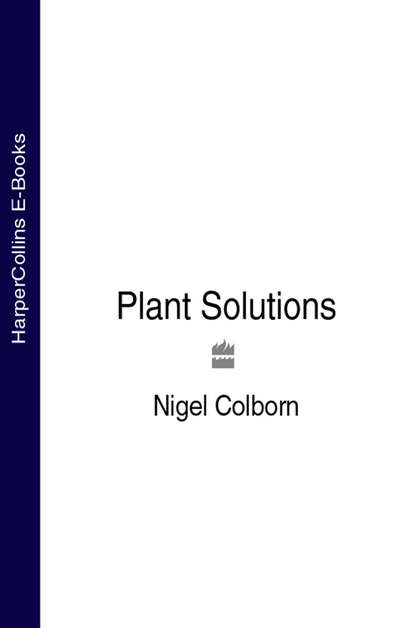По всем вопросам обращайтесь на: info@litportal.ru
(©) 2003-2024.
✖
Plant Solutions
Настройки чтения
Размер шрифта
Высота строк
Поля
Leucojum vernum
Spring snowflake Hardy bulb
Clump-forming bulb with dark green, lustrous strap-like leaves which emerge in late winter, just after the flower stems. These carry one, two or three flowers shaped like pleated bells or lanterns; pure white but with a faint green tinge along the tips. Stems and leaves extend after flowering.
Soil preference: Fertile, not too dry
Aspect: Part shade
Season of interest: Late winter, early spring
Height and spread: 20cm × 10cm (8in × 4in), spreading
Companion plants: Beautiful among tufts of lime green Hacquetia epipactis or below arching Solomon’s Seal (Polygonatum multiflorum) stems, both of which flower a little later.
Focus on…
Narcissus
Daffodils are among the most popular of hardy bulbs. Variable in habit, they range from miniature species and hybrids to tall cultivars with large flowers. Leaves may be strap-shaped or, in miniature species, somewhat grassy. The flowers consist of a trumpet- or cup-shaped corona surrounded by flat or reflexed petals known as perianth segments.
1. Narcissus ‘Jenny’
A pale-flowered cyclamineus hybrid with white, strongly reflexed petals and pale lemon trumpet which fades to cream as the flower ages.
2. Narcissus ‘Ice Follies’
A very large-flowered, commercial variety excellent for cutting but unnatural-looking for small scale wild planting. The pleated lemon cup and white petals, with strong and upright stem give this variety good standing power and, by Narcissus standards, a long life, whether cut or left to bloom outdoors.
3. Narcissus ‘Tête à Tête’
Universally popular, Narcissus ‘Tête à Tête’ is early, compact, easy to grow and dependable. The buttercup yellow blooms, which may come singly or in pairs on the stem, have neat petals and small cups contrasting well with the deep green foliage.
4. Narcissus ‘Topolino’
One of the earliest varieties to flower. The petals are creamy white, making a lovely contrast with the neatly shaped, flared trumpet. Reasonably quick to multiply, and reliable in good, rich soil, this is a valuable miniature daffodil.
5. Narcissus ‘Jetfire’
A vigorous and dependable cyclamineus hybrid with buttercup yellow petals, slightly swept back, and a trumpet which matures to rich orange red. Bulks up more quickly than many hybrids.
6. Narcissus ‘Rip van Winkle’
An oddity whose cultivation dates back several centuries. The petals are split or shredded, giving a dandelion-like impression. Short stems, vigorous and, if not beautiful, at least jolly in colour and appearance.
7. Narcissus bulbocodium
The elegant little ‘hoop petticoat’ narcissus grow wild on the Iberian peninsula. They prefer moist but free-draining soils and, where happy, will self-seed and naturalise readily. For Alpine style meadows, they are superb but will also flourish in gravel, or in a rock garden.
8. Narcissus obvallaris
The Tenby Daffodil, an early species with upright stems and golden flower which are remarkably weather resistant. Ultimate height is 25cm (10in), but the flowers open while the stems are still short.
9. Narcissus pseudonarcissus
The true wild daffodil, short in stature, but big in charm. The pale petals lie along the darker gold trumpet until the flower is fully mature. Best in moist grassland, and easier to establish in high rainfall.
Bulbs: medium and tall for summer
Eremurus robustus
Desert Candle, Giant Foxtail Lily Bulbous perennial
R. Ditchfield
A beautiful monster with broad, fleshy roots arranged in a star or spider shape. Coarse, strap-like leaves grow almost 1m (3ft 3in) high before the thick, rigid flower spikes rear up. These are densely packed with fluffy pink flowers, whose tepals show greenish brown veining.
Soil preference: Free-draining, never wet
Aspect: Sun
Season of interest: Summer
Height and spread: Up to 3m × 90cm (9ft 9in × 3ft)
Companion plants: An individualist but dramatic when included singly or in small groups among such dry-loving shrubs as Jerusalem sage (Phlomis fruticosa), Teucrium fruticans or against the white clouds of Crambe cordifolia.
Allium ‘Purple Giant’
Drumstick Allium Hardy bulb
Member of the onion family with green, glossy leaves which begin to wither before the bold flower spikes mature. These are topped with massed, deep purple blooms arranged in a drumstick formation. A free self-seeder, best sited where other foliage will help to disguise the withering leaves.
Soil preference: Fertile, but free-draining
Aspect: Sun or part shade
Season of interest: Early summer
Height and spread: 1m × 20cm (3ft × 8in)
Companion plants: Frequently used to furnish the base of a laburnum tunnel, where the purple and yellow flowers can contrast, but also beautiful naturalized with other drumstick alliums among tall grasses.
Dierama pulcherrimum
Angel’s Fishing Rod, Wand Flower Corm-bearing perennial
A South African native and strikingly beautiful in outline. Narrow, evergreen, sword-shaped leaves form a dense clump from among which graceful, arching wands develop. These divide into branches of wiry, nodding stems whose almost transparent, papery buds open to reveal bold reddish-purple flowers which hang like lanterns.





